#chemical fertilizer equipment
Text
Ujjawala Chemical And Fertilizers company in Jaipur, chemical company in Jaipur, pesticides company in jaipur
Ujjawala Chemical & Fertilizers is a Modern Agriculture Company. We develop products and systems to help farmers around the country grow crops while using the best of the inputs efficiently. We believe agriculture inputs have the potential to bring humanity's needs in balance with the resources of our planet. Ujjawala Chemical & Fertilizers was established in 1996, during that time it was one of India's first Bio Fertilizers companies. We offer Plant Nutrients and Crop Protection solutions including Fertiliser, Crop Protection, Bio-pesticides, Specialty Nutrients & Organic fertilizer. Ujjawala always make their farmers happy and our motto is also Ujjwala's Farmer Happy Farmer

2 notes
·
View notes
Text

#piyaligroup#rotary kiln#kilntyre#dri plant#cement plant#chemical plant#organic fertilizer equipment#contactusnow
0 notes
Text
“I gathered all vaccine ingredients into a list and contacted Poison Control. After intros and such, and asking to speak with someone tenured and knowledgeable, this is the gist of that conversation.
Me: My question to you is how are these ingredients categorized? As benign or poison? (I ran a few ingredients, formaldehyde, Tween 80, mercury, aluminum, phenoxyethanol, potassium phosphate, sodium phosphate, sorbitol, etc.)
He: Well, that's quite a list... But I'd have to easily say that they're all toxic to humans... Used in fertilizers... Pesticides... To stop the heart... To preserve a dead body... They're registered with us in different categories, but pretty much poisons. Why?
Me: If I were deliberately to feed or inject my child with these ingredients often, as a schedule, obviously I'd put my daughter in harm's way... But what would legally happen to me?
He: Odd question... But you'd likely be charged with criminal negligence... perhaps with intent to kill... and of course child abuse... Your child would be taken away from you... Do you know of someone's who's doing this to their child? This is criminal...
Me: An industry... These are the ingredients used in vaccines... With binding agents to make sure the body won't flush these out... To keep the antibody levels up indefinitely...
The man was beside himself. He asked if I would email him all this information. He wanted to share it with his adult kids who are parents. He was horrified and felt awful he didn't know... his kids are vaccinated and they have health issues...”
~ By Iris Figueroa
Here are just SOME vaccine ingredients present in routine vaccines:
◾️Formaldehyde/Formalin - Highly toxic systematic poison and carcinogen.
◾️Betapropiolactone - Toxic chemical and carcinogen. May cause death/permanant injury after very short exposure to small quantities. Corrosive chemical.
◾️Hexadecyltrimethylammonium bromide - May cause damage to the liver, cardiovascular system, and central nervous system. May cause reproductive effects and birth defects.
◾️Aluminum hydroxide, aluminum phosphate, and aluminum salts - Neurotoxin. Carries risk for long term brain inflammation/swelling, neurological disorders, autoimmune disease, Alzheimer's, dementia, and autism. It penetrates the brain where it persists indefinitely.
◾️Thimerosal (mercury) - Neurotoxin. Induces cellular damage, reduces oxidation-reduction activity, cellular degeneration, and cell death. Linked to neurological disorders, Alzheimer's, dementia, and autism.
◾️Polysorbate 80 & 20 - Trespasses the Blood-Brain Barrier and carries with it aluminum, thimerosal, and viruses; allowing it to enter the brain.
◾️Glutaraldehyde - Toxic chemical used as a disinfectant for heat sensitive medical equipment.
◾️Fetal Bovine Serum - Harvested from bovine (cow) fetuses taken from pregnant cows before slaughter.
◾️Human Diploid Fibroblast Cells - aborted fetal cells. Foreign DNA has the ability to interact with our own.
◾️African Green Monkey Kidney Cells - Can carry the SV-40 cancer-causing virus that has already tainted about 30 million Americans.
◾️Acetone - Can cause kidney, liver, and nerve damage.
◾️E.Coli - Yes, you read that right.
◾️DNA from porcine (pig) Circovirus type-1
◾️Human embryonic lung cell cultures (from aborted fetuses)
You can view all of these ingredients on the CDCs website: 👇
You are always welcome to do your own research, in fact I encourage you to do so. 🤔
#pay attention#educate yourselves#educate yourself#knowledge is power#reeducate yourself#reeducate yourselves#think about it#think for yourselves#think for yourself#do your homework#do your own research#do some research#ask yourself questions#question everything#government corruption#cdc corruption#lies exposed#medical corruption
252 notes
·
View notes
Text
Hormone disrupters are chemicals 🧪 that interfere with your body’s endocrine system, which regulates hormones. They can be found in a lot of every day products like:
Plastic bottles and food containers
Pesticides in agriculture
Cleaning supplies
Chemicals used for clothing
Personal care products like lotions, shampoos & makeup
❌ These are hormone disrupters found in common every day products that you should stay away from ❌
- Bisphenol A (BPA) (plastics and can liners)
- Phthalates (personal care products, fragrances, flexible plastics)
- Parabens (makeup & personal care products)
- Triclosan (antibacterial soaps and cleaning products)
- Polychlorinated Biphenyls (older electrical equipment and industrial products)
- Flame Retardants (furniture, textiles, electronics)
- Pesticides (agriculture)
- Perfluorinated Chemicals (stain resistant treatments, non-stick cookware)
- Dioxins (industrial processes, combustion byproducts)
- Lead (older paints, pipes)
- Dye chemicals (textiles and clothing)
- Water repellents (outdoor clothing, upholstery)
- Stain repellents (carpets, fabrics)
- Formaldehyde (wrinkle free and anti-shrink treatments for fabric)
- Mercury (fish, some thermometers, dental amalgams)
- Cadmium (batteries, some fertilizers)
- Atrazine (herbicides)
- Glyphosate (weed killers)
- Perchlorate (rocket fuel, fireworks, fertilizers)
- Arsenic (contaminated water, pesticides)
- Styrene (plastics, rubber, insulation materials)
- Phosphates (detergents, fertilizers)
- Nonylphenol ethoxylates (industrial detergents, cleaners)
- Organotins (PVC plastics, marine antifouling paints)
- Benzophenone (sunscreens, plastics)
- Octinoxate (sunscreens, makeup)
- 4 Methylbenzylidene camphor (sunscreens, makeup)
‼️ Exposure to these can lead to health issues like reproductive problems, developmental issues and cancer.
🌿 Needless to say, that in order to protect our hormones 🫶 it’s important to recognize these risks and take measures to reduce our exposure them.
91 notes
·
View notes
Text
ANOTHER OC: THE BOYS EDITION

This is fertilizer, Aka Eugene. He’s a supe with Chlorokinesis (the ability to control plants, regenerate them, Ect Ect) his whole thing is that he’s a loser. He got expelled from GodU for “inappropriate use of chemistry equipment and chemicals”
Inspo characters/people:
-Paul Danos Riddler
-Mclovin
-Venus Mcflytrap
-Gideon Graves
-Ted Kaczynski
And more :P
Aurt Of him




#artists on tumblr#fanart#art#digital art#digital artist#digital drawing#artwork#the boys#the boys fanart#the boys oc#supes#the boys fan#prime video
13 notes
·
View notes
Text
Technology's Use of Water
While water is renewable, it is finite. Its renewability depends on us using and managing our water resources responsibly.
Previous articles on this page have discussed hydropower and how it produces less waste and costs less than other resources. We have also briefly discussed how other energy sources consume water as a coolant or receptacle for waste. Entire university courses are dedicated to human uses of water.
Water Scarcity
Only 3% of water on Earth is freshwater. Of course, we need this to drink, but we need it for many more services beyond that.
Many plumbing fixtures are made of copper, which saltwater severely corrodes, same as lead and, over a longer time, PVC. Toilets on average use 1-5 gallons of water per flush. If we want to preserve freshwater by switching to saltwater plumbing, we would have to rethink and re-pipe entire plumbing systems.
We lose safe water in rain, as well. Supported by a study in Environmental Science and Technology, the Center for Disease Control and Prevention in 2022 stated that rainwater is not safe to drink. Chemicals known as per-/poly-fluoroalkyl substances break down extremely slowly, and have leached from many products like cleaners, fabrics, and shampoo into the water cycle. Removing PFAS from water requires filters of activated carbon or reverse osmosis membranes, which also require frequent maintenance.
A lot of water is also not available to us because it is in ice caps and glaciers, which are estimated to be about 68% of Earth’s freshwater. This water is also being lost, because as glaciers melt at increasing rates, that freshwater becomes saltwater in the ocean.
These limitations mean that water is not necessarily renewable yet, especially because treating water produces its own waste and pollution. We have to be responsible with the small percentage of water we have access to.
Irresponsible Use
There are a ridiculous amount of ways in which we waste water. Leaks, watering lawns, and leaving taps running are some of the big household wastes of water. While individual accountability and changes can still make a big difference, I want to focus on bigger impacts.
One example is in nuclear power production. Nuclear power plants use water to cool down used fuel when it is done being used in the reactor. This results in radioactive and thermal water pollution.
Agriculture is another common cause of water pollution. Excess water from rain or artificial watering runs off of agricultural fields and flows towards streams and bodies of water. This runoff often includes amounts of fertilizers and pesticides ranging from minimal to extremely harmful. This leads to improper levels of oxygen, nitrogen, and hydrogen within the water. Like water contaminated by pharmaceuticals, this is not safe to drink, and something not safe for skin contact.
Technology is also a major factor of water demands. Artificial Intelligence and cryptocurrency are heavy water consumers.
AI is beneficial within waste management, as it is able to quickly analyze information and identify issues, potential problems, and potential areas of improvement. Unfortunately, AI training requires a large amount of water. One study states that training GPT-3 alone can evaporate 700,000 liters of freshwater. In 2027, AI is predicted to consume 4.2 to 6.6 billion cubic meters of water. In comparison, Denmark nationally consumes around one billion cubic meters in a year.
Cryptocurrency is even worse. It goes through a process called mining in which transactions are verified and new ‘coins’ are generated into the system. This process is extremely water-demanding. For example, in 2021, mining of Bitcoin consumed more than 1,600 gigaliters of global water. On average, each cryptocurrency transaction consumes 16,000 liters of water in cooling down the computer equipment and the power plants that provide the electricity.
Saltwater as an alternative in these situations does exist; however, this process has the disadvantages of one-time use, large water intake, sewage discharge, and ocean pollution. Technology has begun to improve on this method with seawater circulation cooling technology, which reduces sewage discharge and water intake, but remains an imperfect solution.
Technology has the potential to drastically improve environmental management and restoration, but still has a long way to go before we offset the huge impacts we have made. Freshwater is taken for granted by many people, and the systems that disproportionately consume the most of it are not held accountable. This cycle must stop if we want to make water a truly renewable resource.
Additional Resources
1. Water Renewability
2. Corrosion on Plumbing
3. Treating PFAS
4. Household Water Waste
5. Nuclear Water Waste
6. AI Helping Water Management
7. AI Water Consumption
8. Crypto Mining Water Consumption
9. Seawater cooling technology
#renewable power#renewable energy#water#water pollution#technology#artificial intelligence#ai training#cryptocurrency#digital currency#bitcoin#article#research#resources#environment#climate change#science
4 notes
·
View notes
Text
Exploring the future of organic fertilizer makers: the key to sustainable agriculture
Organic fertilizers are becoming increasingly important in modern agriculture. As an environmentally friendly and sustainable solution, organic fertilizers not only improve soil fertility, but also reduce the use of chemical fertilizers, which is important for environmental protection. Today, we will take an in-depth look at the innovative technology of the Organic Fertilizer Maker to see how it contributes to sustainable agriculture and, in particular, the contribution of the LANE Group in this field.
What is an organic fertilizer maker?
An organic fertilizer maker is a machine designed to convert various organic wastes into organic fertilizers. These wastes include livestock and poultry manure, straw, garden waste, etc. Through a series of treatment processes, these wastes are converted into nutrient-rich organic fertilizers for crops.

Working Principle of Organic Fertilizer Making Machine
The working principle of organic fertilizer manufacturing machine mainly includes the following steps:
Raw material collection: various organic wastes are collected.
Crushing treatment: Crush the large pieces of waste into small particles through the crusher for subsequent processing.
Fermentation treatment: the crushed waste is piled up and fermented to decompose it into organic fertilizer through the action of microorganisms.
Drying and granulation: The fermented organic fertilizer is dried and then made into granules by a granulator for easy storage and use.
LANE Group's organic fertilizer production line

LANE Group is a leader in the field of organic fertilizer manufacturing machines, and its production lines have significant advantages in terms of technology and efficiency. Below are some of the key features of LANE Group's lines:

High-performance equipment: LANE Group's organic fertilizer manufacturing machines are equipped with the latest technology to ensure high production capacity and stable operational performance.
Fully automated operation: The production line is equipped with a fully automated control system, which automates the entire production process from raw material handling to the final product, greatly reducing labor costs.
Environmentally friendly design: LANE Group focuses on environmental protection, and each piece of equipment has been strictly designed for environmental protection to ensure that the impact on the environment is minimized during the production process.
Customized service: According to the specific needs of customers, LANE Group can provide customized production line design and solutions to meet the needs of different scales and types of organic fertilizer production.
Advantages of Organic Fertilizer Manufacturing Machine
Environmental protection: Using organic waste to manufacture fertilizer reduces the accumulation of waste and pollution to the environment.
Improve soil fertility: organic fertilizers are rich in organic matter and trace elements, which can improve soil structure and enhance the soil's ability to retain water and fertilizer.
Reduce costs: Compared with chemical fertilizers, organic fertilizers are widely available and inexpensive.
Improve crop yield and quality: long-term use of organic fertilizers can improve crop yield and quality, and enhance its resistance to pests and diseases.
Development prospect of organic fertilizer manufacturing machine
With the global emphasis on sustainable agriculture, the market demand for organic fertilizer manufacturing machines is increasing. More and more farmers and agribusinesses are beginning to realize the advantages of organic fertilizers and are gradually adopting organic fertilizer manufacturing machines for their production.LANE Group has become a key player in the market by virtue of its advanced technology and quality services. In addition, government policy support and subsidy measures also provide a strong guarantee for the development of organic fertilizer manufacturing machines.
Organic fertilizer manufacturing machine, as an innovative agricultural technology, is gradually changing the production method of traditional agriculture.LANE Group has made remarkable achievements in this field with its high performance, full automation, environmentally friendly design, and customized services. It not only provides farmers with an environmentally friendly and efficient fertilizer solution, but also makes an important contribution to the development of sustainable agriculture. In the future, with the continuous progress and promotion of technology, the organic fertilizer manufacturing machine will surely play an even more important role in the agricultural field.
Contact Us!

2 notes
·
View notes
Text
What's the Deal with Cotton?
For @rangerofthesouth , I don't work with cotton but we just went over all this in my field crop class and how we grow cotton feels very bizarre? Keep reading below for stuff on GMOs and cotton farming.
As far as I can tell cotton is probably one of the most technology-intensive crops we grow in the US. Not necessarily physical technology as in equipment, but gene technology (GMOs), breeding, and chemical use. It has all the standard things used on it that other industrial row crops have, such as herbicides, fertilizers, and pesticides. But it also has GMO traits and needs to be treated with plant growth regulators (PGRs), and defoliant before harvest.
So it turns out, cotton is a perennial plant. So if the weather is right it will just keep growing into something of a bush/tree sort of thing. But when grown as a crop they get treated with PGRs to slow/stop vegetative growth and to trigger reproductive growth (aka, the flowers that form into cotton bolls). Link to a picture of a guy with cotton not treated with PGRs on time below.
There's multiple kinds of GMOs. The big ones are traits added for herbicide/chemical resistance in the plant (such as Roundup Ready), and then there's pest resistance which usually is the Bt (Bacillus thuringiensis) trait. Bt is a bacteria that will infect insects if they feed on the plant, killing them off or deterring them. As far as I'm aware the big GMO crops in the US are soybeans, corn, and cotton; As well please note cotton production is very different across the world, I'm strictly speaking about the US.
What kind of crazy about pest resistant GMOs though, is it was touted around as an end to pesticides for a while. There was a quote I heard somewhere though that goes something like "if you're in a war and you have weaponry but the other side has evolution, the other side is going to win". Basically, insects started developing a resistance to Bt. And so different types of Bt traits keep getting stacked on one another to keep it effective, and currently we're up to 3 stacked Bt traits (see chart below, its from my class lol). Only the upper most trait on this chart is still effective, the others aren't.

What's nuts about this, is that cotton farmers are paying for every stacked gene even if they're ineffective. According to my prof a bag of conventional untreated cotton seed is ~$100, while GMO cotton is ~$600 a bag. The price of cotton off the field is really bad too, as far as I last heard its $0.70/1 lb. There's more numbers than this but as you can imagine with chemical applications, gas for equipment, and fertilizer, its looking not profitable. And so the US cotton industry is hella subsidized and there's so many government programs to keep it alive because many farmers cannot survive growing cotton without the subsidies.
I don't know a whole lot other than this because I've only just begun looking at cotton, but here's some questions and things I'm thinking about. First, clearly we need a whole system change because everything conventional ag brings out to stop the pests and weeds causes resistance development; chemicals and genes are helpful technologies, but only when used carefully within other non-chemical pest management strategies. We're currently deepening a major environmental and agricultural crisis with ag chemical usage. Second, I really want to look more into the legal side of things with government crop subsidies and insurance because it really seems to be the core things propping up all this for multiple crops (corn and soybeans included). And then, what would cotton look like in an alternative agricultural system? Personally I've only ever seen it as a conventional row crop.
#I normally just use tumblr mobile but I whipped out my laptop for this one lol#agriculture#cotton#fiber#rangerofthesouth#I'm going to add a reblog about irrigation
7 notes
·
View notes
Text
the elusive hundred percent vegan

WHAT IS VEGANISM?
The term vegan was coined in 1944, by the Vegan Society. The following definition applies
[…] a philosophy and way of living which seeks to exclude—as far as is possible and practicable—all forms of exploitation of, and cruelty to, animals for food, clothing or any other purpose; and by extension, promotes the development and use of animal-free alternatives for the benefit of humans, animals and the environment. In dietary terms, it denotes the practice of dispensing with all products derived wholly or partly from animals.
(Updated 1979, The Vegan Society)
It is impossible to live in the world and avoid everything that uses animals in one way or another.
But we can take time to research manufacturers and producers and be able to make an educated decision on the products we buy and use.
Thanks to modern technology, we have greater access to retailers all over the country – even the world - and have wider choices.
As more and more people are made aware of the atrocities involved in everyday items, more people are looking for these.
If they don’t find them they will begin asking why not. Manufacturers and developers will see a market that has been created and will be motivated to make sweeping changes.
Living in the society we do, with advances that have had a huge impact on our daily lives, we should take the position that we will, whenever possible, only consume cruelty free alternatives.
I don’t believe that the issue here is one of being a perfect vegan.
Rather, it is a question of being the best vegan we can. And by making sure that every choice we make is one that is in the best possible interest of animals.
If we love animals, our priority should be to reduce their suffering as much as possible and to do our best to make a difference to their lives.
As long as we live in a world that is frighteningly dependent on animal products, we cannot be completely vegan. But we can put in a 100% effort to living as cruelty – free as possible.
Animal activist and lecturer Gary Yourofsky:
“I’ll just add briefly that our ability to achieve 100 percent vegan status really depends on our definition of vegan. If being vegan means striving to commit the least amount of harm possible, then one can be fully vegan. Unfortunately, as long as we are living, we will inadvertently cause harm to other living beings. But we can consistently strive to reduce this harm to the best of our abilities.”
Here are just some examples of non – essential (ie. not necessary to sustain life) products that may contain animal products or may make use of animal products in their production:
Antifreeze
Asphalt
Batteries
Biodegradable detergents
Books
Bricks
Cars (or any form of transport)
Cell phones
Cement
Chemicals
Computers
Explosives
Fireworks
Glue
Home insulation
Industrial oils and lubricants
Insulation material used to cool and heat houses
LCD screens
Many electronics
Musical instruments
Organic foods (manure used as fertilizer)
Paper
Pesticides
Plaster
Rubber
Sports equipment
Steel
Tools that have any moving parts
Tyres
Varnish
Wood
X-ray film
HOW TO IDENTIFY PRODUCTS THAT AREN’T CRUELTY FREE AND ALTERNATIVES (WHERE AVAILABLE):
ANIMAL INGREDIENTS LIST - WITH ALTERNATIVES WHERE AVAILABLE:
ANIMAL INGREDIENTS LIST
BEEF “BY PRODUCTS”
ETHICAL SHOPPING
With thanks to World Preservation Foundation, Vegan Society, Vegan Outreach, Natural Society, Treehugger, One Green Planet and Mother Nature Network.
2 notes
·
View notes
Text

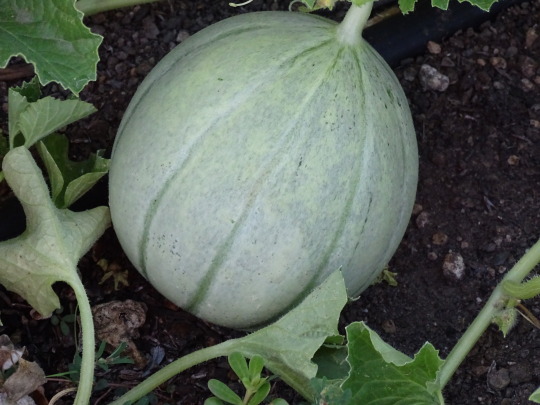

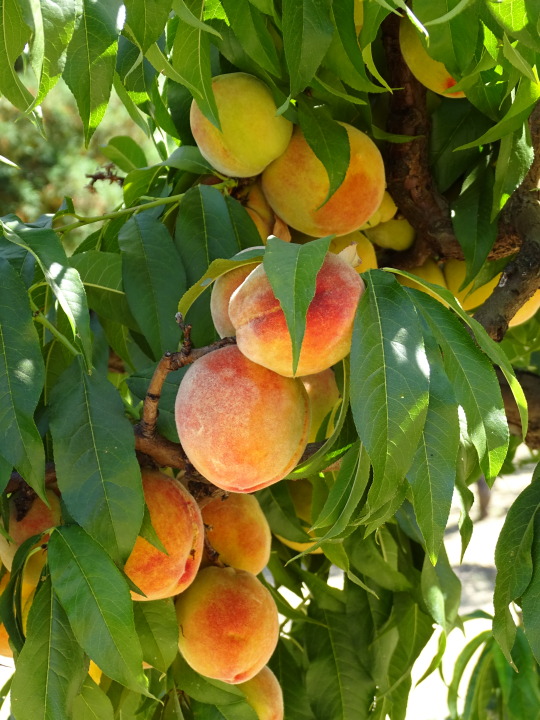
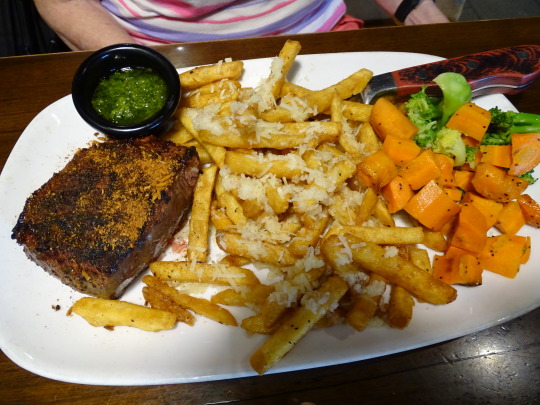


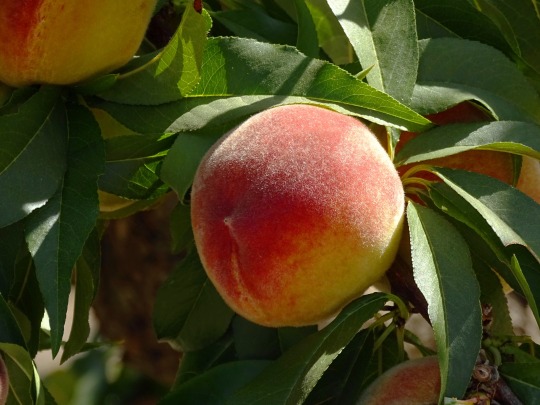
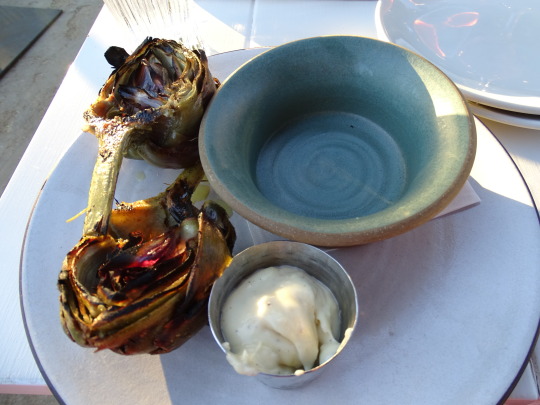



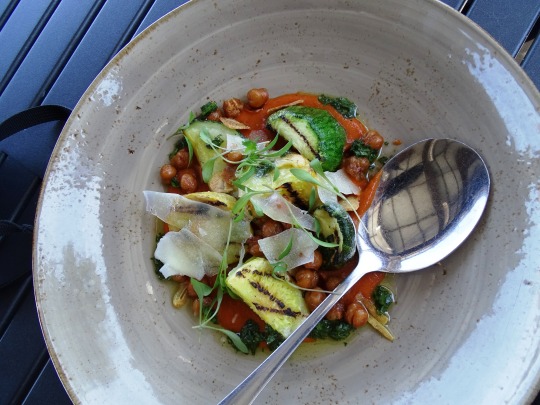

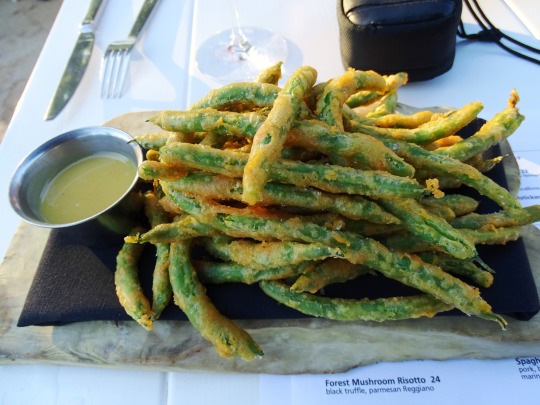







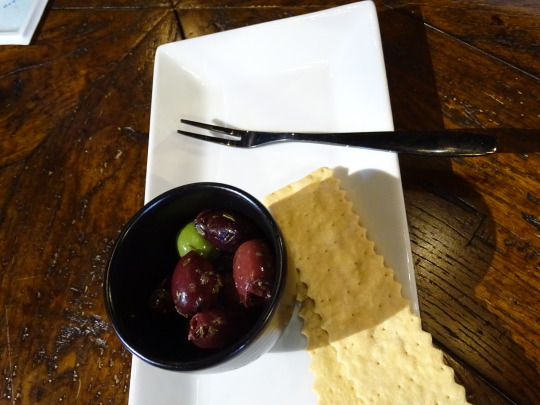




Eat More Fruits and Vegetables Day
Eat More Fruits and Vegetables Day is celebrated on May 21. This is the perfect time for the availability of all our favorite fresh fruits and vegetables. We believe including fresh fruits and veggies in the diet is necessary for a healthy life. Eat More Fruits and Vegetables Day is dedicated to a cause. The increase in obesity and lifestyle diseases among American people is a major concern nowadays. This is a day to remind us of the importance of fresh food, which helps us lead a healthy life.
History of Eat More Fruits and Vegetables Day
Ever wondered who started the cultivation and farming of vegetables and fruits? We only have a vague idea about the start of cultivation. We know we used to forage for nuts and fruits as far back as 1,00,000 years ago. During that time, our ancestors observed that the seeds they threw away created new plants.
The understanding that we could manipulate plant growth was perhaps one of the greatest discoveries of the ancient world. Most scientists agree that proper cultivation started only around 30,000 years ago. Initially, farming was a concept associated with grains and cereals. However, the practice soon expanded to include fruits and vegetables as well. Fruits and vegetables are good sources of necessary vitamins and minerals.
There are records of Romans using greenhouses to cultivate vegetables and fruits. The vegetables and fruits available nowadays are different from their ancient counterparts. Selective breeding for nutrition and edible quantity changed the shape, color, and even the taste for the better. But today, the trend has changed as we all opt for fast food.
This decision contributes to the obesity crisis and the formation of deadly lifestyle diseases. The growing number of people affected by unhealthy eating caused the Dole Food Company to take action. They created this holiday to educate the world about healthy eating and spread awareness about conditions such as obesity.
Eat More Fruits and Vegetables Day timeline
8000 B.C. — 9000 B.C. The First Evidence of Cultivation
People from the Fertile Crescent region in the Middle East start cultivating the land.
5000 B.C. Bartering for Better
The bartering trade system in China is improved with the addition of fruit and vegetables to the trade list.
30 A.D. Romans Introduce Greenhouses
The Roman Emperor, Tiberius, farms fruits and vegetables using greenhouses.
2015 Eat More Fruits and Vegetables Day
The Dole Food Company kicks off Eat More Fruits and Vegetables Day.
Eat More Fruits and Vegetables Day FAQs
What happens when you eat more fruits and vegetables?
A diet rich in fruits and vegetables can supplement essential vitamins, minerals, and dietary fibers. It can help reduce health conditions like diabetes, obesity, heart attack, and stroke. It can also help reduce blood pressure, cholesterol levels, and digestive issues and even prevent some forms of cancer.
How much fruit and veg a day is too much?
It depends on each person, their health conditions, and body weight. But generally speaking, around 14 ounces per day is good.
Is a fruit and vegetable diet costly?
Fresh fruits and vegetables are costlier compared to regular crops. High prices are due to the necessity of manual labor and the need for customized equipment for cultivation. But the reduction in healthcare justifies the higher prices.
Eat More Fruits and Vegetables Day Activities
Source your fresh fruits and veggies
Explore the flavors of vegetable recipes
Invite people for a salad party
This is the easy part. Just pack a bag and start shopping for fresh veggies and fruits. Make sure to buy your veggies from the freshest source. It is best to buy from an organic source. This can help ensure the food is free of harmful chemicals or pesticides.
People often do not realize the choices available for fruit and vegetable recipes. There are countless vegetable dishes and smoothes available to try. Celebrate by exploring the tasty cousins available rather than going for fast food.
Get your friends who share the same enthusiasm for fresh food. You know what to do then! We have already purchased fruits and vegetables, and we know the recipes too. So sheath those knives and start cutting some veggies for the party.
5 Facts About Fruits And Vegetables That Will Interest You
Fruits and vegetables can increase your lifespan
The bounty of vitamins and minerals
The top consumer and producer
Versatile
Fruits are delicious
Consuming fruits and vegetables in place of meat can increase one’s life expectancy by a few years.
A fruit and vegetable diet is a rich source of essential vitamins and minerals.
China leads the world in fruit and vegetable production and consumption.
Fruits and vegetables can be consumed in any form: fresh, canned, dried, frozen, and juice.
Fruits are sweet with fructose, and they do not pause the risk of extra sugar into our bloodstream.
Why We Love Eat More Fruits and Vegetables Day
It can reduce the risk of various diseases
Vegetable and fruit diets are cruelty-free
It can reduce our carbon footprint
This is not a secret, but a non-vegetarian diet can cause numerous health issues. Diabetes, heart attack, stroke, obesity, e.t.c. are all companions of meat consumption. Adding more vegetables and fruits can help reduce these health conditions before they manifest.
There is a long battle raging between vegetarians and non — vegetarians. A vegetarian diet is relatively less cruel as no killing or maiming is involved. A major argument is that plants are also alive, but plants are not sentient like animals and do not feel the same kind of pain. So it is a relatively cruelty–free diet.
Meat production negatively affects our environment. It is a demanding process and needs a lot of water and food. The byproducts can add to the greenhouse gas emission and thus to global warming. The same amount of investment in cultivation can yield better output and reduce carbon emission.
Source
#Chicken Hunan Kung Pao#Truffled Parmesan Chicken#steak#artichokes#apple#pear#watermelon#grape#eggplant#USA#Canada#travel#Brix Restaurant & Gardens#Beringer Vineyards#original photography#eating#tourist attraction#landmark#banana#Eat More Fruits and Vegetables Day#21 May#NationalEatMoreFruitsandVegetablesDay#vacation#St. Francis Winery & Vineyards
2 notes
·
View notes
Text
What is Bagging Machine? - Payper India
A bagging machine is a type of industrial equipment used to automate the process of filling and sealing bags with various products. These machines are widely used in different industries, such as food, pharmaceuticals, chemicals, and agriculture, to efficiently package goods ranging from powders and granules to liquids and solids.
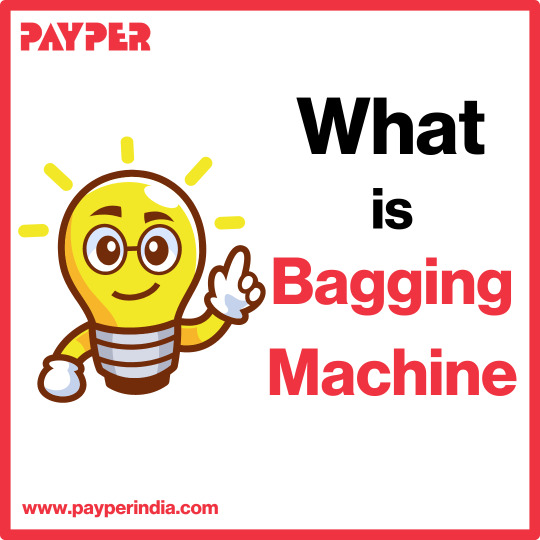
Image Ref : What is Bagging Machine — Payper India
Key Functions of Bagging Machines:
Filling: The machine accurately dispenses a pre-set amount of product into each bag. This can be achieved through various mechanisms, such as volumetric fillers, auger fillers, or weigh scales, depending on the nature of the product being packaged. Click here for Ref : www.payperindia.com
Sealing: After the bag is filled, the machine seals it to ensure the product is contained and protected. Sealing methods can include heat sealing, ultrasonic sealing, or using adhesive tapes, depending on the bag material and the product requirements. Click here for Ref : www.payperindia.com
Cutting/Trimming: Some bagging machines also trim excess material from the sealed bags to ensure a neat and uniform appearance. Click here for Ref : www.payperindia.com
Types of Bagging Machines:
Valve Bagging Machines: Designed for heavy-duty products such as cement, sand, or chemicals, these machines fill bags through a valve and then seal the valve to prevent leakage. Click here for Ref : www.payperindia.com
Open-Mouth Bagging Machines: Used for bulk products like grains, animal feed, or fertilizers, these machines fill pre-made bags that are manually or automatically positioned under the filling spout. Click here for Ref : www.payperindia.com
FIBC- Jumbo Bagging Machine: A jumbo bagging machine, or bulk bag filling machine, is designed to fill large bags (500–2000 kg) with bulk materials.
Why Payper ?
Payper India develops and manufactures bagging machines for all types of bulk solids such as powders or granulates. Other important product lines are palletizers and complete lines.
Our customers come from many different sectors, e.g., Chemical Industry, Agro-food Industry, Mining Industry and Building Industry. Payper India offers a comprehensive solution for each sector.
No need or demand is too small neither too big for us. We supply bagging machines for smaller industries with low volume requirements. We also provide complete turnkey projects for customers with high demands as to capacity and speed.
What matters to us is that our customer is comfortable and satisfied with the solution we have developed for them
Visit Payper at — https://www.payperindia.com/
Business LinkedIn -http://bit.ly/45Y1xMQ
Twitter — https://twitter.com/PayperIndia
Instagram — https://www.instagram.com/payperindia/
#payper#payperindia#baggingmachines#manufacturer#industry#machinery#robotics#palletisers#jumbobaggingmachine
2 notes
·
View notes
Text

#piyaligroup#rotary kiln#organic fertilizer production line#organic fertilizer equipment#chemical plant#contactusnow
0 notes
Photo

Richard Vandiver: Owner, 📷, and still truckin’ hard 💪 Here’s what Richard has to say: How about another gone & I guess forgotten past,, I started trucking in ‘74 gross weight was 73,280 I believe… back then I remember how the truck stops really catered to the American trucker,, you went in the TS’s that really had respect for you,, areas marked off especially for you, they added the phones to your booth,(that was a plus),, if you frequent the stop,, you probably got to know the waitresses, & probably her family & she knew of yours, slower pace then compared to now,, it seems things were more personal & respectful,, because your occupation it what runs this country,,,, I live in a farming community & receive a lot of their business & appreciate it,, but BEFORE the farmer feeds us,,,don’t EVER forget,,,, who is responsible for delivering,, the new & used farm equipment & parts,, the seed, chemicals, fertilizer, etc, etc,,,& then who hauls those collected yields to the market,, trains can’t do it, ships can’t do it, planes can’t do it,,,,, until the American trucker makes it happen,,, yes, guys like Sonny & Will make it happen,, no one appreciates how many days & nites you are on the road,, terrible food you sometime eat,, DOT’s, scales, crooked cops, waiting to load/unload, crooked brokers, why,,? It’s in your blood, addicted to the grind,,something about the smell of diesel fuel & exhaust,,& how you treat & talk to your truck & it’s engine,, another town, another mile,,,, truly a big thank you to all of you old school die hards. The new generation has yet to earn my respect & everytime I hear the truckers national anthem “ 6 DAYS ON THE ROAD,,& I’m gonna make it home tonight,, i along with you know exactly what that really means,,,,,, there a good cup coffee just up the road,,,,,,, just saying,,,, I’m still addicted,,,,,,, #cdljob #cdljobs #cdlhunter #trucker #rollingcoal #dieselnation #iceroadtruckers #truckdrivers #dieselpower #cdldriver #dieselporn #truckstop #truckerslife #diesellife #trucklife #bigrig #truckersview #roadhog #cdllife #trucking #trucks #truckdriver #truckers #truckingindustry #chickenlightsandchrome (at United States) https://www.instagram.com/p/CnwfLssOSXQ/?igshid=NGJjMDIxMWI=
#cdljob#cdljobs#cdlhunter#trucker#rollingcoal#dieselnation#iceroadtruckers#truckdrivers#dieselpower#cdldriver#dieselporn#truckstop#truckerslife#diesellife#trucklife#bigrig#truckersview#roadhog#cdllife#trucking#trucks#truckdriver#truckers#truckingindustry#chickenlightsandchrome
30 notes
·
View notes
Text
Green Thumb Secrets: Expert Gardening Hacks for Thriving Gardens
Unlock the Magic of Gardening Hacks to Cultivate a Lush and Vibrant Garden Paradise
Introduction: The Promise of Gardening Hacks
Welcome to the world of gardening hacks, where nature's beauty and innovation unite to create thriving garden paradises. In this comprehensive guide, we'll explore the transformative power of gardening hacks that can turn your green space into a lush and vibrant haven of flora. Get ready to embark on a journey of ingenuity, creativity, and blooming success.
Heading 1: The Essence of Gardening Hacks
The Essence of Hacks: Delve into the unique allure of gardening hacks, where your love for plants and practicality combine to cultivate a flourishing garden.
Heading 2: Navigating the World of Gardening Hacks
Planning Your Garden: Discover expert tips for planning your garden, from choosing the right plants to understanding your soil and climate.
Time-Saving Tricks: Explore time-saving gardening hacks that streamline maintenance tasks and let you enjoy your garden more.
Water Conservation: Learn efficient watering techniques and tools to keep your garden hydrated while conserving water.
Plant Propagation: Dive into the world of plant propagation, from seed starting to cutting propagation, to expand your garden without breaking the bank.
Soil Enrichment: Understand how to enrich your soil using natural composting methods and soil amendments.
Pest Control: Explore natural and eco-friendly pest control strategies to protect your plants without harming the environment.
Seasonal Gardening Tips: Discover gardening hacks tailored to each season, ensuring your garden thrives year-round.
Heading 3: Transforming Your Garden with Gardening Hacks
Maximizing Small Spaces: Explore creative hacks for small-space gardening, including vertical gardening, container gardening, and raised beds.
Companion Planting: Learn about companion planting and how it can boost plant health and yield while reducing pests.
Innovative Plant Care: Discover innovative plant care solutions, from self-watering systems to homemade fertilizers and growth boosters.
Organic Gardening Hacks: Embrace the principles of organic gardening through eco-friendly and chemical-free methods.
Garden Design and Aesthetics: Dive into garden design hacks that elevate the visual appeal of your outdoor oasis.
Heading 4: Real-Life Gardening Hack Success Stories
Inspiring Transformations: Read real-life success stories from gardeners who have embraced gardening hacks, showcasing the power of innovation and practicality in gardening.
Heading 5: Choose Your Gardening Hack Journey Today
Your Green Paradise Begins: Your journey to a thriving garden paradise begins with the choice to explore gardening hacks. By the end of this guide, you'll be equipped with inspiration, strategies, and motivation to embark on your gardening hack project.
Invest in Your Garden's Beauty: Bid farewell to gardening struggles and embrace the opportunity to create a lush and vibrant outdoor space that nourishes your soul and delights your senses.
Enhanced Gardening Hack Experience
To make your exploration of gardening hacks even more engaging, we've incorporated multimedia elements. Expect to find captivating garden photos, instructional videos, and interactive tools to help you plan and execute your gardening endeavors.
References:
Wikipedia - Link to Gardening
Cultivate a lush and vibrant garden paradise with the ingenuity and practicality of gardening hacks. Whether you seek time-saving techniques, organic gardening solutions, or creative space-maximizing ideas, gardening hacks empower you to create a green space that blooms with beauty and vitality. Choose your gardening hack journey today and invest in a future filled with thriving gardens that nurture your soul and inspire your green thumb.
"Stay updated with our website blog for the latest trends and insights."
3 notes
·
View notes
Text
Export Import Products List
Exporting and importing products is a major part of the global economy. In 2022, the value of global merchandise trade was over $28 trillion. This means that businesses and consumers all over the world are exchanging goods and services on a massive scale.

There are a wide variety of products that are exported and imported, but some of the most common include:
Agricultural products: This category includes food crops, such as wheat, rice, and corn, as well as livestock and animal products, such as meat, dairy, and eggs.
Chemicals: This category includes a wide range of products, such as petrochemicals, pharmaceuticals, and fertilizers.
Electrical machinery and equipment: This category includes products such as generators, motors, and computers.
Food and beverages: This category includes processed foods and drinks, as well as fresh produce.
Machinery and equipment: This category includes products such as machine tools, engines, and construction equipment.
Manufactured goods: This category includes a wide range of products, such as textiles, clothing, and electronics.
Minerals and fuels: This category includes products such as crude oil, natural gas, and coal.
Other goods: This category includes products that do not fall into any of the other categories, such as furniture and toys.
Textiles and clothing: This category includes products such as yarn, fabric, and garments.
Transport equipment: This category includes products such as cars, trucks, and airplanes.
The specific products that are exported and imported vary from country to country. For example, the United States is a major exporter of agricultural products, machinery, and equipment, while China is a major exporter of manufactured goods and electronics.
Factors to Consider When Choosing Export Import Products
There are a number of factors that businesses should consider when choosing which products to export or import. These factors include:
Demand: Is there a strong demand for the product in the target market?
Competition: How much competition is there for the product in the target market?
Profitability: Is the product profitable to export or import?
Regulations: Are there any regulations that restrict the export or import of the product?
Logistics: How will the product be transported to and from the target market?
Benefits of Exporting and Importing Products
There are a number of benefits to exporting and importing products. For businesses, exporting can help to increase sales and profits, and it can also help to diversify the business's customer base. Importing can help businesses to access products that are not available domestically, and it can also help businesses to reduce costs.
For consumers, exporting and importing can help to lower prices and increase the availability of goods. For example, consumers in the United States can buy fresh produce from all over the world, and they can also buy electronics and other manufactured goods at lower prices because of imports.
Conclusion
Exporting and importing products is a vital part of the global economy. It helps businesses to grow and consumers to save money. If you are considering starting an export import business, there are a number of resources available to help you get started.
#Export Import Products List#export import products#export import data#exporter#bussiness#export#import#importers
2 notes
·
View notes
Text
From Soil to Harvest: Maximizing Crop Yields with Biological Seed Inoculation
In the world of modern agriculture, where the need for increased crop yields is paramount, biological seed inoculation has emerged as a powerful tool. This technique, which involves the application of beneficial microorganisms to seeds before planting, offers a promising solution for farmers looking to boost productivity while minimizing environmental impacts. In this article, we will explore the science behind biological seed inoculation and how it maximizes crop yields, from the soil to the harvest.

The Science of Biological Seed Inoculation
Biological seed inoculation is rooted in the symbiotic relationships that certain microorganisms can form with plants. By introducing these beneficial microbes to seeds, we set the stage for a harmonious partnership that benefits crops in several ways.
Protection Against Pathogens: A primary role of biological seed inoculation is to protect plants from harmful pathogens. Some microorganisms act as natural biocontrol agents, outcompeting disease-causing organisms and reducing the need for chemical pesticides. This natural defense mechanism safeguards crop yields and reduces environmental contamination.
Enhanced Nutrient Uptake: Beneficial microorganisms play a pivotal role in improving nutrient uptake by plants. Nitrogen-fixing bacteria convert atmospheric nitrogen into a form that plants can utilize, reducing the reliance on synthetic nitrogen fertilizers. Mycorrhizal fungi form symbiotic relationships with plant roots, increasing the absorption of vital nutrients like phosphorus and potassium.
Stress Tolerance: In an era of changing climate patterns, plants often face environmental stressors like drought, salinity, and extreme temperatures. Biological seed inoculation equips plants with the tools to withstand these challenges. Some microorganisms produce stress-resistance proteins or enhance root growth and water retention.
Promotion of Growth and Development: Certain microbes, known as plant growth-promoting rhizobacteria (PGPR), actively stimulate plant growth. They achieve this by producing growth hormones, solubilizing nutrients, and improving root development, resulting in healthier and more vigorous crops.
Benefits of Biological Seed Inoculation
The adoption of biological seed inoculation offers a multitude of benefits for both farmers and the environment.
Reduced Chemical Dependency: By decreasing the need for chemical pesticides and synthetic fertilizers, biological seed inoculation reduces the environmental footprint of agriculture. This approach aligns with sustainable farming practices that prioritize environmental stewardship.
Improved Soil Health: Over time, biological seed inoculation can enhance soil health by promoting beneficial microbial communities in the soil. This leads to improved soil structure, nutrient cycling, and overall soil fertility.
Consistent Crop Yields: Biological seed inoculation ensures more consistent and reliable crop yields, even in challenging environmental conditions. This stability is crucial for food security and economic sustainability.
Cost Efficiency: While initial investment costs may be higher, long-term savings are achieved through reduced chemical inputs and increased crop productivity. Farmers can reap the benefits of a healthier bottom line.
Conclusion
Biological seed inoculation represents a paradigm shift in modern agriculture. By harnessing the power of beneficial microorganisms, we are not only maximizing crop yields but also reducing the environmental impact of farming. This approach aligns with the global imperative of producing more food while preserving our planet's resources. As we continue to unlock the potential of these microscopic allies, we are taking significant strides toward a more sustainable and eco-friendly agricultural future. It's a journey that not only benefits farmers but also ensures a more secure and sustainable food supply for generations to come.
2 notes
·
View notes